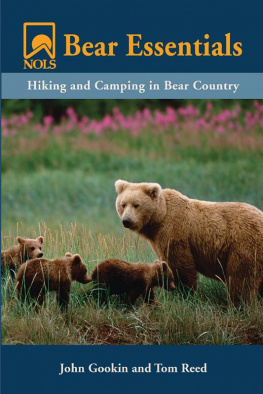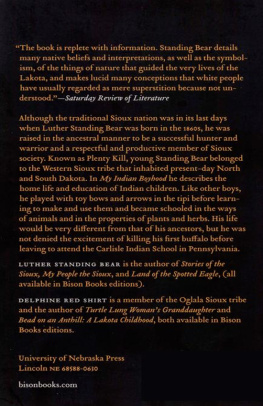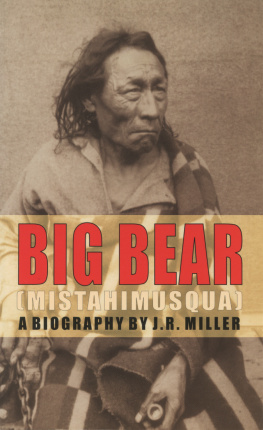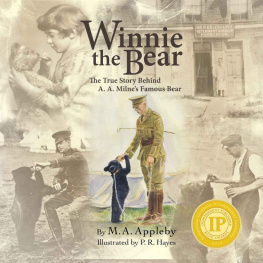This edition is published by BORODINO BOOKS www.pp-publishing.com
To join our mailing list for new titles or for issues with our books borodinobooks@gmail.com
Or on Facebook
Text originally published in 1926 under the same title.
Borodino Books 2017, all rights reserved. No part of this publication may be reproduced, stored in a retrieval system or transmitted by any means, electrical, mechanical or otherwise without the written permission of the copyright holder.
Publishers Note
Although in most cases we have retained the Authors original spelling and grammar to authentically reproduce the work of the Author and the original intent of such material, some additional notes and clarifications have been added for the modern readers benefit.
We have also made every effort to include all maps and illustrations of the original edition the limitations of formatting do not allow of including larger maps, we will upload as many of these maps as possible.
THE WAR TRAIL OF BIG BEAR
Being the Story of the connection of Big Bear and other Cree Indian Chiefs and their followers with the Canadian North-West Rebellion of 1885, the Frog Lake Massacre and events leading up to and following it, and of Two Months Imprisonment in the Camp of the Hostiles
BY
WILLIAM BLEASDELL CAMERON
CHAPTER I THE FROG LAKE SETTLEMENT
It fell in the quiet night,
There was never a sound to ken;
But all of the woods to the right and the left
Lay filled with the painted men. STEVENSON
FOUR hundred miles east of the great continental backbone of North America, the Rocky Mountains, and six miles north of the North Saskatchewan River, a collection of substantial log buildings in the year 1885 had reached the dignity of a small civilized community known as the Frog Lake Settlement.
The Saskatchewan is the grand river of the old Canadian North-west Territories. Rising in the Rockies, it flows east, draining most of that immense sweep of hill and plain, forest, lake and muskeg through its connections into the broad Arctic reservoir of Hudson Bay. Like Mississippi, Saskatchewan is a Cree or Algonquin word and means Swift-running. During many years steamboats sweated their way fifteen hundred miles up the tortuous channels of the main stream and its two chief branches, the North and South Saskatchewan, with merchandise for Fort Edmonton, then a trading centre of the Hudsons Bay Company, now the capital city of Alberta, and slipped back on its hurrying flood with peltries in rich packs on their way to the worlds fur market at London.
Frog Lake, for many years following 1885, as a place of human abode no longer existed. It fell back into the embrace of that wilderness from which it was once in part wrested. The mystery of silence brooded over it. The pilots of its first feeble steps toward an ordered progress slept beneath its grass-topped hillsides, and ashes covered the ground whereon stood their habitations. The traveller passed quickly along the trail leading through it and camped at night away from its sombre associations. Even the savage author of its desolation shunned a spot where in the dark his unquiet fancy conjured up the accusing shades of stunned and martyred victims. For on the morning of April 2 nd in that year of 1885 the red man whose home this wilderness was arose with his fierce blood galloping in his ears and casting aside his dissembled amity, struck to the earth the intruder upon his heritage.
That pale-skinned stranger had come boldly upon the land as though it had belonged to him. True, a treaty had been made, but he did not regard the gods, the traditions or the customs of its people. He scoffed at the wisdom of its chiefs and prophets. He treated them not as equals and brothers but as children, foolish, untaught. He would have shown them a new manner of life. They cared nothing about any new manner of life; they were satisfied with life as they knew it. Except that they had thought that life would have been easier, somehow, after the treaty was signed.
At first had they made him welcome, sharing their meat and camp fire according to the ancient usages of the red peoples. Then for a time they had marvelled and endured and spoken in secret council. And at length when the opportunity arose they had thrown off the mask of submission to the new order of things that had come uninvited upon them and rifle and torch in hand sped to the work of vengeance and destruction.
It is the story of the Frog Lake Massacre I have to tell. There is nothing pretty about it. A stain dark and bloody on the page of Canadian history, that is all it is. Yet as history it is worth preserving. I lived at Frog Lake, was present at that massacre and narrowly escaped the fate that overtook my luckless fellows. For months afterward the unexpected report of a gun put my heart in my mouth. In my dreams painted savages raced yelling after me at early dawn through belts of dark firs, over knolls, across valleys; bullets sang in my ears or buried themselves in my flesh; and I awoke gasping and unable in the first seconds of consciousness to convince myself that it was not all a horrible reality. Even after all these years I do not often care to dwell in memory upon that dreadful time. But always I have felt that it would one day be my part to set down faithfully what I knew and saw and it is in that feeling that this is being written.
Fortunately I am not dependent on memory alone, which might prove fickle. Copious notes concerning the events, preserved from the time of their occurrence, afford a basis for confidence and make the work comparatively easy. The story is a plain one and I shall endeavour to tell it plainly. Neither is there place in it for much play of imagination, and if the dramatic setting, the romantic atmosphere of a wild and lonely land, the smoke of tepees and the native eloquence of men naked and brown as leaves in autumn, which are inseparable from the bald and simple narrative, do not invite the devourer of the sensational and melodramatic in literature the tale is not for him.
A few words at the outset respecting the country and the various bands of Indians inhabiting it will simplify my work and anticipate the necessity for hindering explanations in the body of the narrative.
The settlement of Frog Lake consisted of three main groups of buildingsgovernment, Hudsons Bay Company and Roman Catholic mission; the store of a trader named George Dill, and a small grist mill in course of construction. There were the dwellings of the Indian agent, farming instructor, interpreter, the North-west Mounted Police bar-racks, stores, blacksmith shop, stables and out-houses; the Hudsons Bay Companys trading shop, store, dwelling and stable; the mission church and dwelling. The mill and residence of its builder, John C. Gowanlock, lay some two miles nearer the Saskatchewan than the main settlement, located at the foot of Frog Lake, a beautiful sheet of water fifteen miles in length, connected with the Saskatchewan through a creek bearing the same name.









